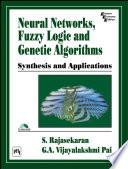
CBSE MATHEMATICS FOR CLASS XI
THOROUGHLY REVISED AS PER NEW CBSE SYLLABUS
Strictly as per the new CBSE course structure and NCERT guidelines, this thoroughly revised and updated textbook is designed for class XI of senior secondary schools (under the 10 + 2 pattern of education). The text is presented in a logical manner. It identifies your problem areas and helps you to solve them. Every effort has been made to make the contents as simple as possible so that the beginners will grasp the fundamental concepts easily. KEY FEATURES : Large number of solved examples to understand the subject. Categorization of problems under: Level of Difficulty A (Cover the needs of the students preparing for CBSE exams) Level of Difficulty B (Guide the students for engineering entrance examinations). ‘Learning Objectives’ at the beginning of each chapter to enable the students to focus their study. Problem Solving Trick(s) to enhance the problem solving skills. Besides this, each chapter is followed by a Chapter Test to test problem solving skills. Working hints to a large number of problems are given at the end of each and every exercise. In a nut shell, this book will help the students score high marks in CBSE, and at the same time build a strong foundation for success in any competitive examination. Contents: CONTENTS Preface Syllabus Chapter 1 Sets Chapter 2 Relations and Functions Chapter 3 Trigonometric Functions Chapter 4 Principle of Mathematical Induction Chapter 5 Complex Numbers and Quadratic Equations Chapter 6 Linear Inequations Chapter 7 Permutations and Combinations Chapter 8 Binomial Theorem Chapter 9 Sequences and Series Chapter 10 Straight Line Chapter 11 Conic Sections Chapter 12 Introduction to Three-Dimensional Geometry Chapter 13 Limits and Derivatives Chapter 14 Mathematical Reasoning Chapter 15 Statistics: Measures of Dispersion Chapter 16 Probability
- ISBN 13 : 8120335074
- ISBN 10 : 9788120335073
- Judul : CBSE MATHEMATICS FOR CLASS XI
- Sub Judul : THOROUGHLY REVISED AS PER NEW CBSE SYLLABUS
- Pengarang : Khattar Dinesh, khattar Anita,
- Kategori : Mathematics
- Penerbit : PHI Learning Pvt. Ltd.
- Bahasa : en
- Halaman : 1056
- Halaman : 1056
- Google Book : http://books.google.co.id/books?id=oGd-F_HTLAoC&dq=inauthor:anita+lie&hl=&source=gbs_api
-
Ketersediaan :
... and appreciate: + Coordinate Axes and Coordinate Planes in Three-
dimensional Space + Coordinates of a Point in Space + Distance Formula +
Section Formula INTRODUCTION In plane (two-dimensional ) co-ordinate
geometry, the position of a point is located in terms of perpendicular distances
drawn from that point to the two reference lines which are perpendicular lines
known as co-ordinate axes. In our practical life, the point does not always lie in a
plane, it may lie in space.









